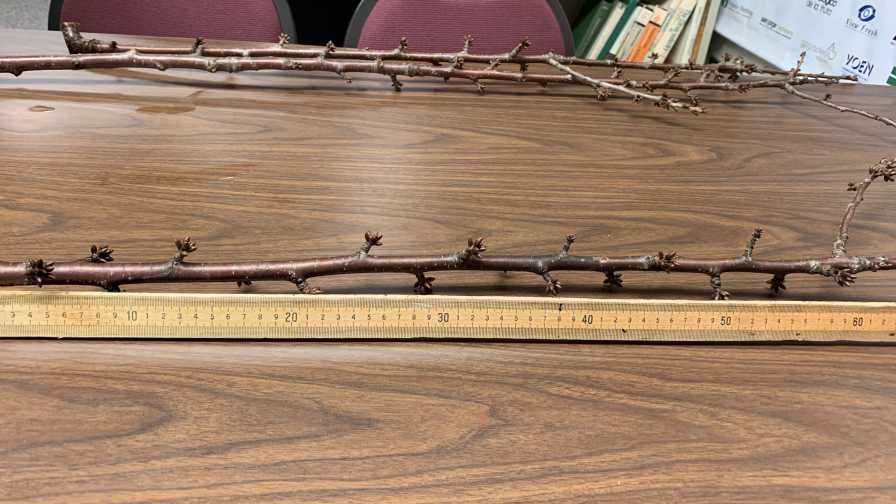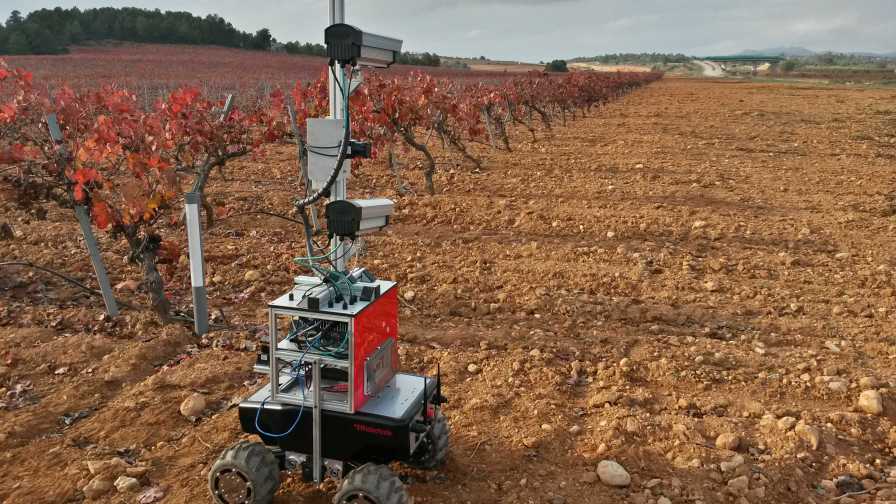Mechanization Making Way to a Cherry Orchard Near You
In tree fruits, precision orchard management and mechanization are natural associations. Precision orchard management is about quantification to make optimal decisions, such as: How many leaves are needed to grow a sweet cherry of the targeted quality (e.g., 9 Row size, or 30 mm diameter, or 12 grams)? How many flower buds or flowers are needed to achieve a desired yield (e.g., 8 tons/acre) of fruit of the targeted quality?
Of course, these illustrations can be refined to sharpen the targets with the input of more data — not just how many leaves are needed but also how many sun-exposed leaves are needed? How does the typical number of daily hours of sunlight in a Michigan orchard vary from the typical number of daily hours of sunlight in an orchard in eastern Washington? And does this differential alter the target leaf number in an inversely proportional way to produce comparable fruit?
Next, when the factors for making orchard decisions have been identified and quantified so decisions are based on numbers rather than intuition, this simplification is a key step toward introducing or improving mechanization for specific tasks. What are the machines, or sensors, that can potentially help gather the quantified data, such as measuring sun-exposed leaves or estimating numbers of flower buds or flowers? What are the machines that can be used for carrying out orchard tasks to implement the data-driven decisions for optimizing fruit quality or yield outcomes?
Human Extensions
The most valuable, incomparable machine in the orchard today is the human — a biological machine with incredible visual sensory perception, an amazingly fast and complex processor of highspeed sensory inputs in the context of anticipated outcomes, and a marvelously adaptable force/motion activator with motor skills and dexterities that range from brute force to subtle and precise micro-adjustments. And increasingly important, the ability to utilize other mechanized machines to improve the efficiency of the human machine.
The range of secondarily valuable machines that can serve as extensions of the human machine is growing at a fairly rapid pace. The tractor and the pruning loppers have long been critical extensions of the human machine. Tractors increase the efficiencies of transport, soil and groundcover preparation, and spray protection against pests and diseases, etc. Pruning loppers increase the efficiency of altering canopy structure, leaf area, and flower bud numbers. Without these long-standing machines, the human machine would still primarily be a hunter-gatherer.
With simplified, repeatable fruiting unit-based sweet cherry canopy architectures, such as KGB (spur-bearing upright leaders), UFO (spur-bearing upright offshoots), or Tatura Trellis (spur-bearing lateral shoots), it is much more feasible to quantify or estimate average leaf area per fruiting unit and to prune or thin to achieve target flower and fruit numbers.
For example, the sample UFO (upright fruiting offshoot) offshoot depicted in the photo above is 22 inches (56 cm) long, with 18 fruiting spurs. If the average leaf number per spur and area per leaf had been measured and recorded in previous years on similar wood, the anticipated leaf area available to support fruit growth could be estimated.
For example, 18 spurs x 5 leaves per spur x 9.3 square inches of area per leaf would project to about 840 square inches of leaf area on that section of shoot. Physiological studies over the years have shown that, across an entire tree, a ratio of around 33 square inches (215 cm2) of leaf area per fruit is associated with optimal fruit size. So, the projected leaf area (840 square inches) divided by 33 square inches suggests that 25 fruit would be the target number for achieving optimum quality (presuming there is no other leaf area on the tree that could also contribute to fruit development).
Furthermore, with 25 fruit per 22 inches (1.14 fruit per inch), if the overall fruiting unit is 7 feet long (as might be the case for UFO or KGB [Kym Green Bush]), the projected target number of fruit to carry per structural unit would be 84 inches x 1.14 = 96 fruit. If the fruiting unit is a 4-foot lateral on a Tatura Trellis, the target would be 55 fruit.
The Real Deal
Now here is where the interface between precision orchard management and future technological mechanization becomes interesting. Whatever the precision target numbers are (since they will likely vary somewhat by climate, variety, fertility, and other factors), electronic sensors to image and analyze spur leaf and flower densities in simplified, planar tree architectures are getting very close to reality.
Such sensors could be mounted in an array on tractors or even on autonomous robotic orchard vehicles like the VINBOT to traverse the orchard guided by GPS. The sensor array would capture thousands of continuous images and data throughout the season to quantify leaf area, flowering spurs, and/or ripening fruit, and thereby greatly expand the orchard information database for reviewing, refining, and optimizing orchard management targets.
If such an array were mounted on the front of a tractor, feeding data and groundspeed into a tractor-mounted computer, the computer could then activate individual nozzles on a sprayer array at the back of the tractor to selectively apply thinning spray materials to only those sections of fruiting structure where too many viable flowers need to be reduced. Alternatively, the computer could activate an array of micro-string thinners or air jets to non-chemically knock off excessive flowers in the cluster. Such precise imaging sensors and computer-activated individual spray nozzles already exist commercially for tractor-mounted weed-spraying booms in agronomic and row crops.
Think of these possibilities as the next step up from Roomba robotic vacuums in homes or Honda robotic lawnmowers that are increasingly common. With recent advances in simplified, planar fruit tree architectures, the precision interface with efficient orchard-sensing technologies and “smart” task-oriented mechanization and robotics is clearly on the horizon












